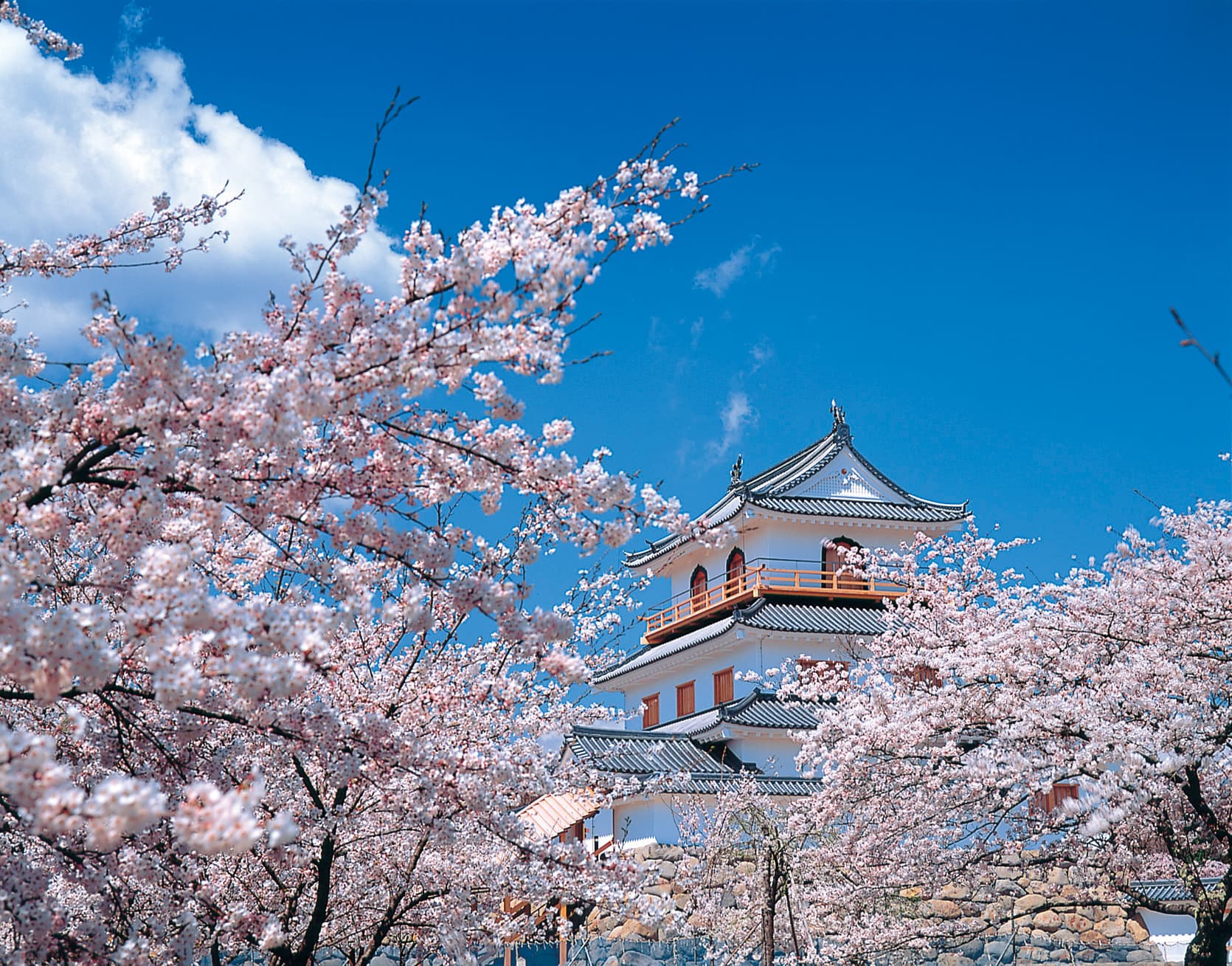
Shiroishi Castle
白石城- Shiroishi StationTōhoku Main Line
- Walk 12 minutes
Shiroishi Castle has stood witness to pivotal moments in Japanese history. Originally built in 1591 by Gamo Genzaemon under orders from Toyotomi Hideyoshi, the castle marked a shift in regional power after the Date clan's lands were confiscated. Following a brief period under the Uesugi clan, the castle returned to Date hands in 1600 when Date Masamune seized it just before the Battle of Sekigahara. It was then entrusted to his close retainer, Katakura Kojūrō Kagetsuna, who led a major renovation and established the castle as the seat of the Katakura family for over 260 years.
Perched on a hill at 76 meters above sea level, Shiroishi Castle was a classic example of a hirayamajiro (hilltop castle). Its layered design included a stone-walled central keep, several baileys, turrets, gates, and residences, blending both medieval fortification styles with early modern planning. Remarkably, Shiroishi Castle was one of only two castles permitted in the Sendai domain even after the shogunate's "One Castle per Province" law of the early Edo period.
In 1868, the castle gained further historical significance when it became the headquarters of the Ōuetsu Reppan Dōmei, a coalition of northern domains opposing the new Meiji government. A short-lived Provisional Government was established here, and Prince Rinnōji no Miya took residence, cementing the castle's place in the story of Japan’s transition from feudal rule to the modern era.
The Katakura family, longtime retainers of the Date clan, are remembered for their loyalty and leadership. According to the historical text Katakura Daidaiki, the clan saved the Date family from crisis on three occasions: by urging submission to Hideyoshi at Odawara, displaying heroic valour during the Osaka Campaign, and mediating internal conflict during the Kanbun Incident (Date Clan Dispute - 1671).
Shiroishi Castle’s Three-Story Turret (Tenshukaku)
The iconic three-story turret of Shiroishi Castle was faithfully reconstructed in March 1995, 120 years after the original was dismantled in 1874. This rare wooden reconstruction, based on historical records and archaeological excavation, revives the appearance of the castle as it stood in 1823, during its final phase as a functioning fortress.
Built using traditional Japanese techniques and entirely from domestic wood -including Yoshino cypress, Aomori cypress, and Japanese red cedar - the turret is designed to last over 250 years. No modern metal reinforcements were used. The walls, made of thick, fire-resistant plaster over multiple layers of local earth, reflect regional castle construction methods.
With a height of 16.7 meters from the top of the stone base, this is one of the largest postwar wooden reconstructionsof a Japanese castle tower. The interior reflects its historical use: it was not a lord’s residence, but a defensive and strategic structure. The first floor features a "musha-bashiri" (a corridor where armored samurai could move quickly), and “ishi-otoshi” (stone-drop windows) used in siege defense. The third floor, surrounded by railings, served as a watchtower and command post, offering a view over Shiroishi town and the scenic Zao mountains.
The stone foundation shows two historic masonry techniques: “nozura-zumi”, where unshaped natural stones are piled - a style from the Sengoku period - and “uchikomi-hagi”, a more refined method using fitted stones and filler pebbles. The walls include openings for arrows, guns, and stone drops, demonstrating the turret’s defensive purpose.
Shiroishi Castle History Museum
The Shiroishi Castle History Museum is located within Masaoka Park, adjacent to Shiroishi Castle. The first floor includes the ticket counter, a souvenir shop offering local crafts and castle-related goods, and a restaurant serving regional cuisine and desserts. On the second floor, visitors can explore an exhibition hall featuring a 1:100 scale diorama of the historical castle town, along with displays of Katakura family armor, swords, and matchlock firearms. The third floor, accessible with an admission ticket, features a high-brightness 3D “high-vision” theatre with a 5-meter-wide screen, presenting three historical films about the castle’s past.
Samurai Residence (Bukeyashiki)
Located north of the castle along the river, this preserved Edo-period samurai dwelling belonged to the Oseki family, mid-level retainers of the Katakura clan. The Oseki family’s presence in Shiroishi dates back to the late 17th century, when Motoari Oseki, the second son of a Matsumae clan retainer, came to Shiroishi at the age of twelve. He accompanied a noblewoman who married into the Katakura family, lords of Shiroishi Castle. In 1716, Motoari was appointed as a guard retainer and later served as a lady’s attendant.
The house itself was originally recorded in a 1761 map of Shiroishi as the residence of "Koseki Uemonshichi”. During dismantling and restoration in 1992, an inscription dated 1730 was discovered inside the structure, confirming its age. This places the home's construction during the late years of Motoari’s life or early in the tenure of his son, Mototomo.
The residence exemplifies a transitional architectural style - a blend of traditional farmer homes evolving into samurai residences. With its modest form and thatched hipped roof, the house reflects the daily functionality of a mid-level samurai's lifestyle while maintaining dignity and simplicity. The Oseki Residence, along with its entrance gate and earthen walls, was donated to Shiroishi City in 1992 and fully restored.
At Hey Japan!, we strive to keep the places listed on our website as current as possible. However, it is important to note that location owners or management may make changes to their plans, including canceling events, altering opening times, or modifying admission requirements, without prior notice. To ensure that you have the most accurate information, we recommend checking official websites before visiting any location.
Last Updated:












